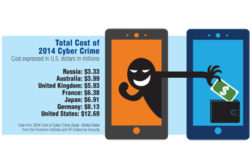Cybersecurity News
Staving Off the Next Generation of Data Breach
Using Techniques like Continuous Monitoring Can Help Keep Enterprises Aware
February 24, 2015
Sign-up to receive top management & result-driven techniques in the industry.
Join over 20,000+ industry leaders who receive our premium content.
SIGN UP TODAY!Copyright ©2024. All Rights Reserved BNP Media.
Design, CMS, Hosting & Web Development :: ePublishing








